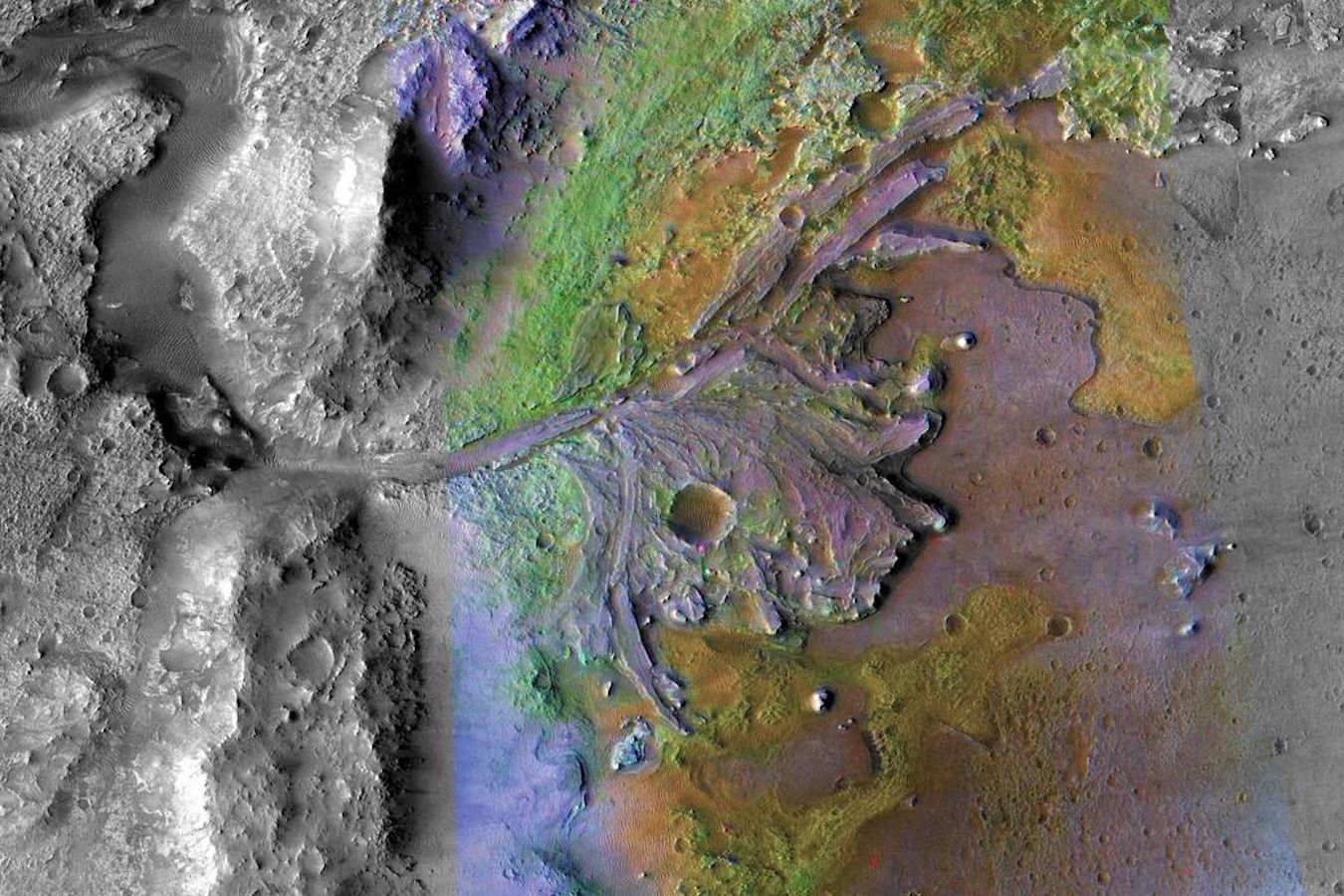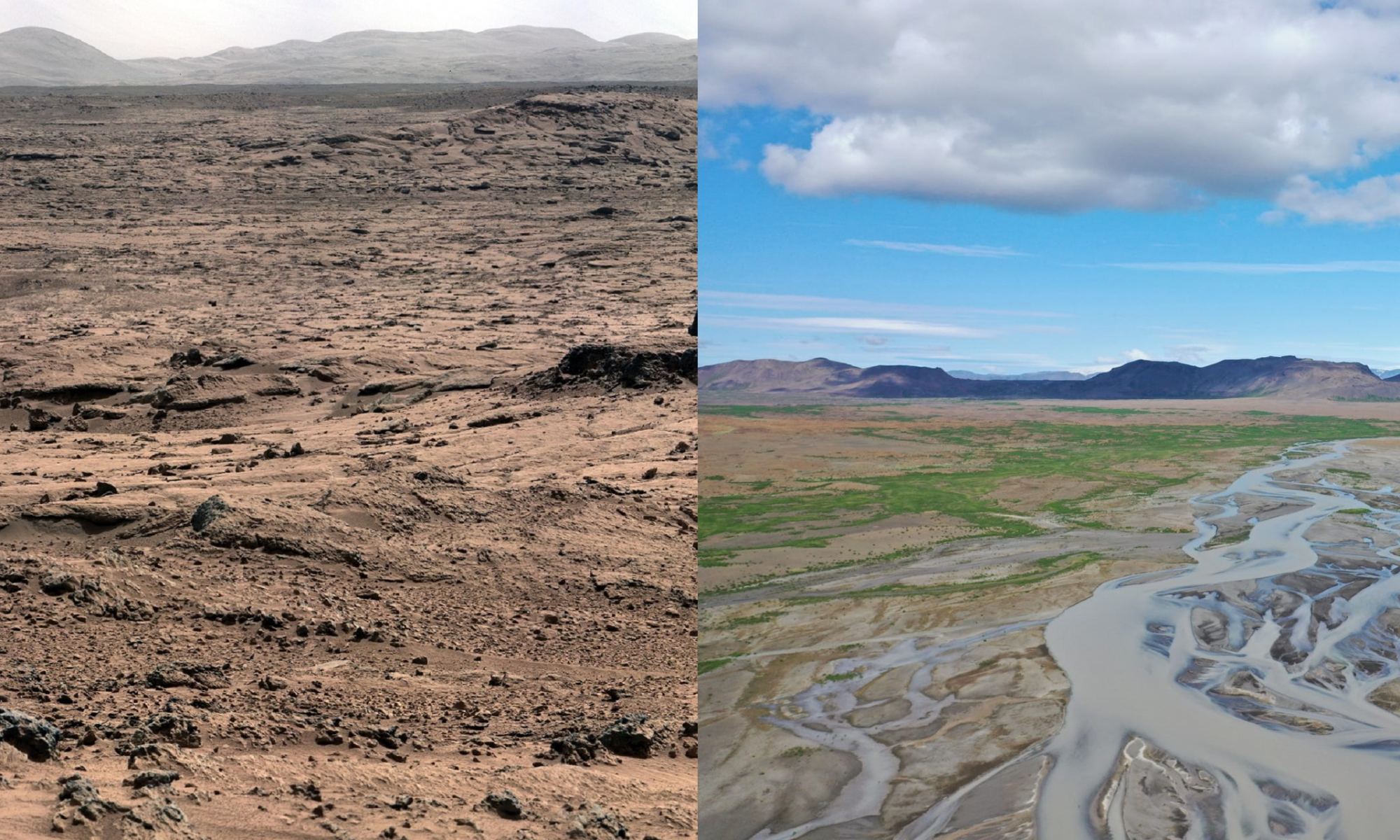The search for life on alien worlds has captivated us for hundreds of years. In some respect, the search for life has expanded to the search for water since it is not unreasonable to assume if there is water then there is a good chance there is life too. When NASA selected the landing site for Perseverance, they were looking for such a body of water and settled upon the Jezero Crater. Images from orbiters reveal a crater that looks like it has been filled with water in the past but further investigations were needed to confirm. Now it seems, Perseverance has risen to the challenge.
Continue reading “Perseverance is Definitely Inside an Ancient Lake on Mars”Helicopters Could Map the Magnetic Fields on Mars
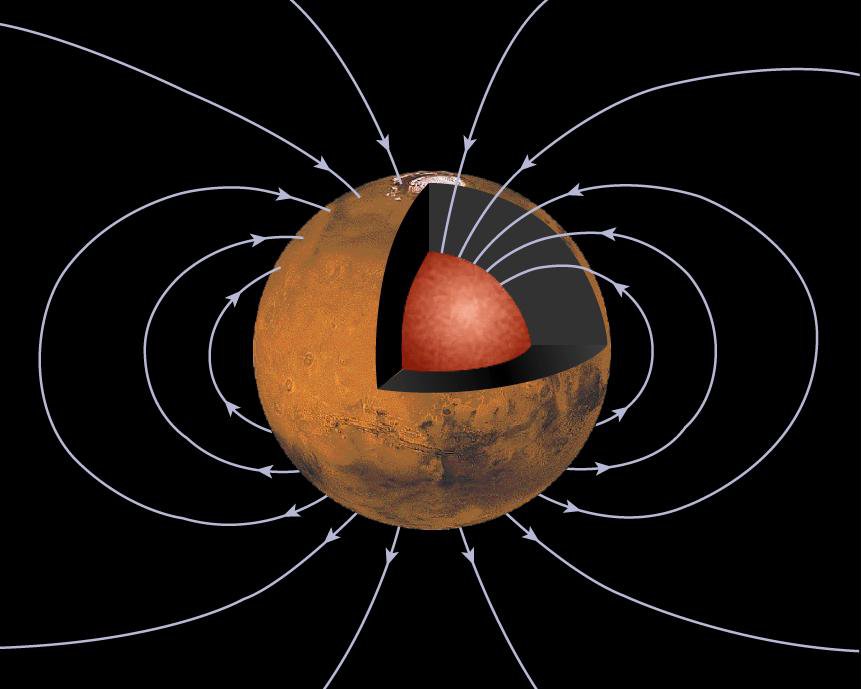
A recent study published in The Planetary Science Journal examines how helicopters equipped with a magnetometer could be used to conduct magnetic field investigations within the crust of Mars, providing important insights into the present characteristics and early evolution of the Red Planet. This study comes as NASA’s Ingenuity helicopter continues breaking records and making history as the first powered aerial explorer on another planet, along with the recently expired NASA InSight lander using its own magnetometer to measure the crustal magnetic field.
Continue reading “Helicopters Could Map the Magnetic Fields on Mars”Ancient Cracked Mud Found on Mars

A recent study published in Nature examines how mud cracks observed on Mars by NASA’s Curiosity rover could provide insight into how life on the Red Planet could have formed in its ancient past. On Earth, mud cracks have traditionally been linked to cycles of wet and dry environments that assisted in developing the complex processes responsible for microbial life to take hold. This study was conducted by an international team of researchers and holds the potential to help scientists better understand the geological and chemical processes that might have existed in Mars’ ancient past, up to billions of years ago.
Continue reading “Ancient Cracked Mud Found on Mars”China’s Rover Found Evidence of an Ancient Ocean on Mars
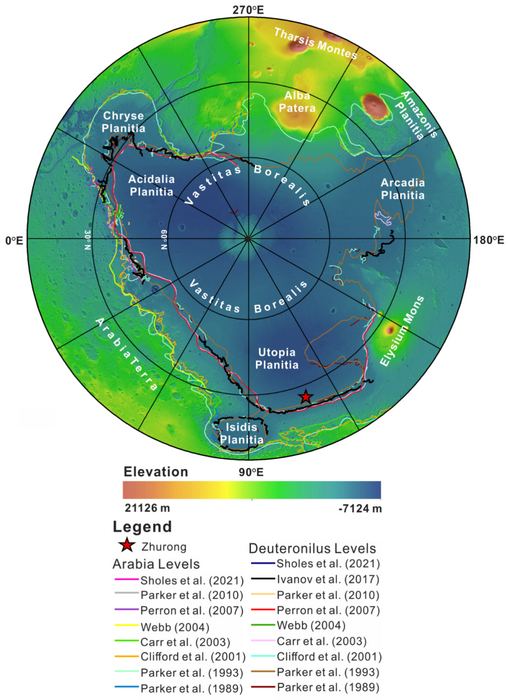
In a recent study published in National Science Review, a team of researchers led by the China University of Geosciences discuss direct evidence of an ancient ocean and its shoreline that existed in the northern hemisphere of Mars during the Hesperian Period, or more than 3 billion years ago. This finding is based on data collected by the China National Space Agency’s (CNSA) Zhurong rover in the Vastitas Borealis Formation (VBF), which lies within southern Utopia Planitia on Mars.
Continue reading “China’s Rover Found Evidence of an Ancient Ocean on Mars”ExoMars is Back on Track for Mars in 2028
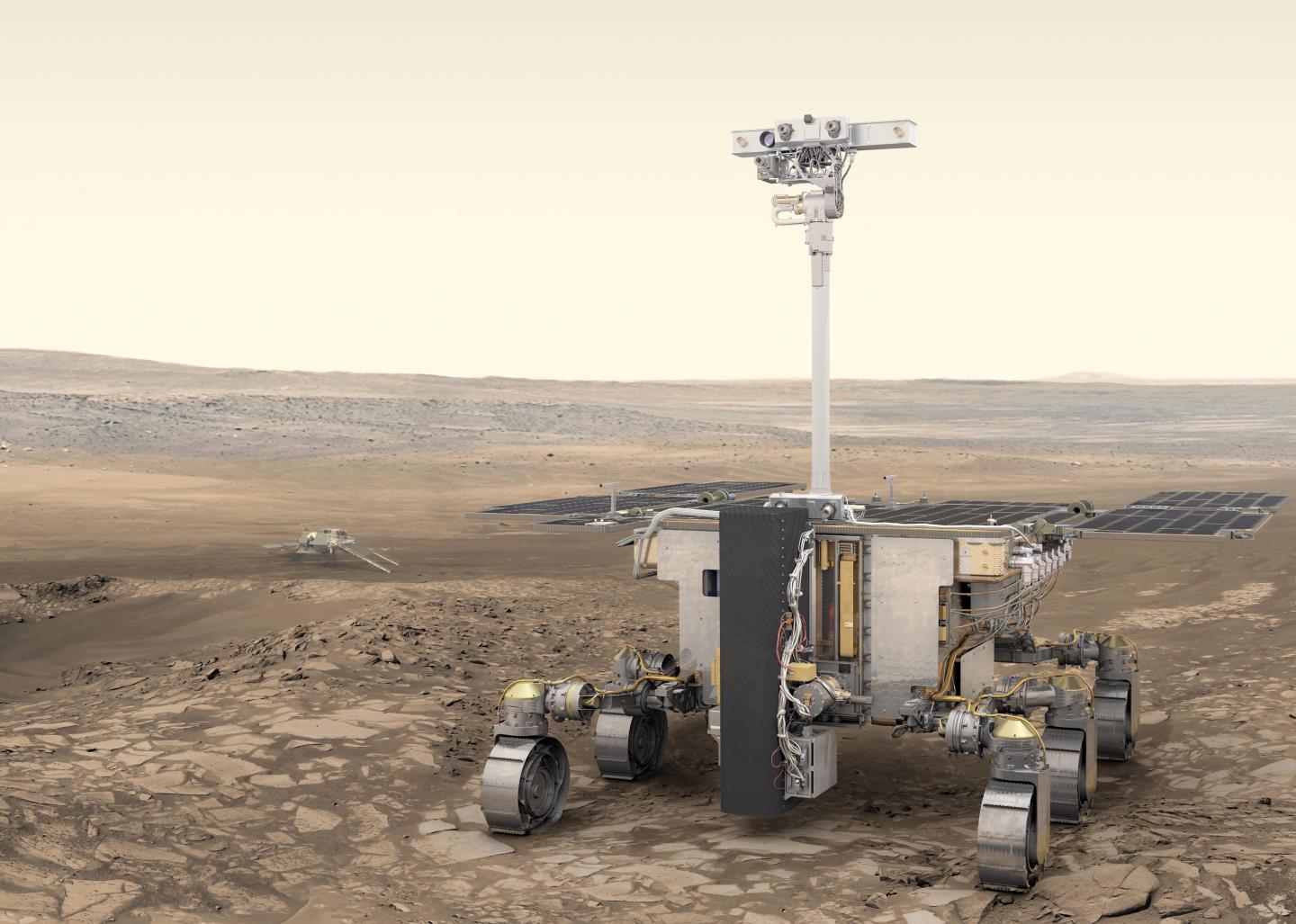
The ExoMars Rover mission is back on track for its mission to Mars, but Russia won’t be a part of it this time. Following Russia’s disastrous invasion of neighbouring Ukraine in February 2022, the ESA suspended the ExoMars program.
Now, the mission is targeted for a 2028 launch to Mars without Russian involvement. In anticipation of that launch date, the ESA is busy testing the Rosalind Franklin rover and its mission-defining drill.
Continue reading “ExoMars is Back on Track for Mars in 2028”Perseverance is Putting its Samples Onto the Surface of Mars, So a Future Helicopter can Pick Them Up
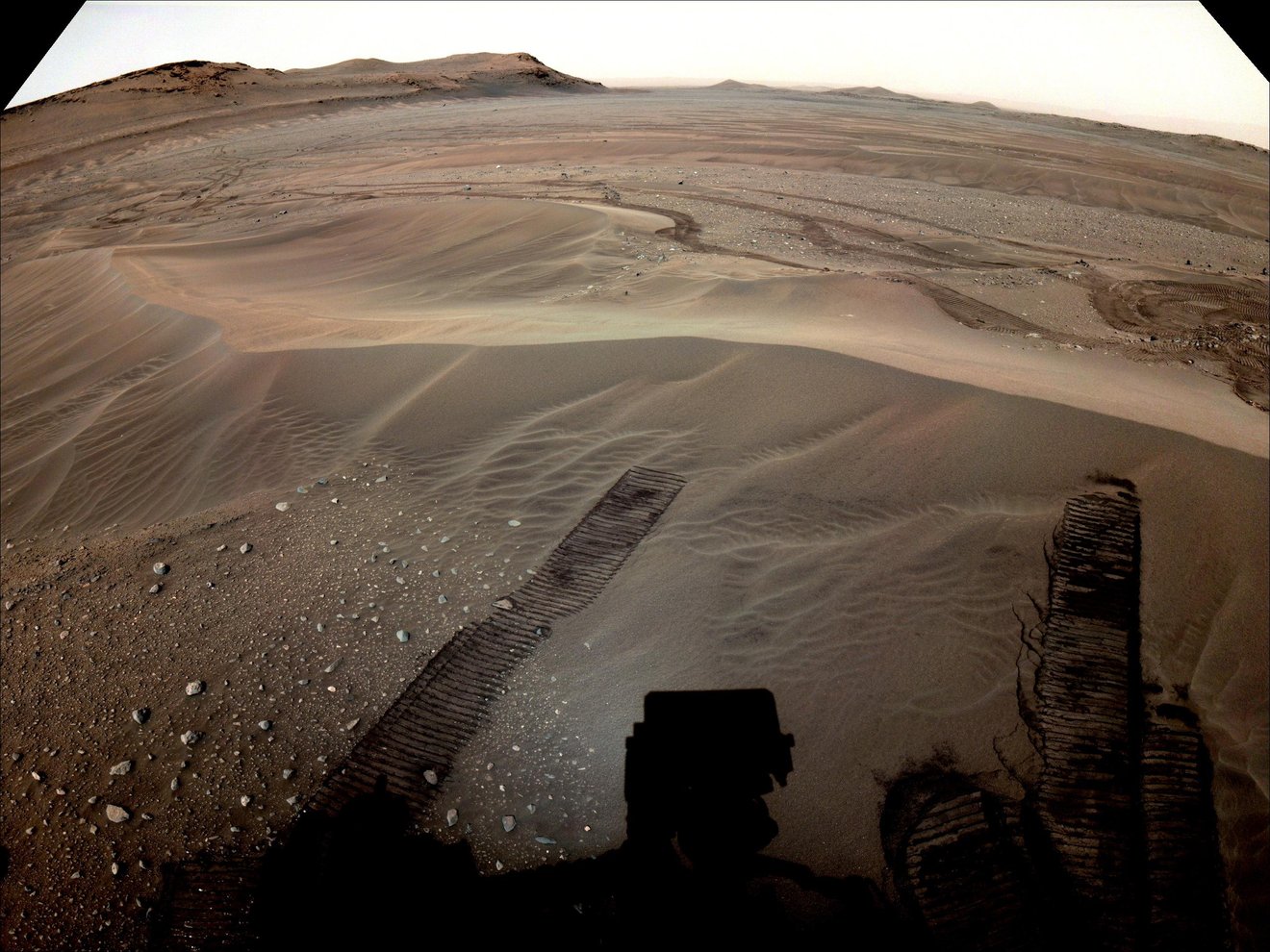
At this point in its mission, NASA’s Mars Perseverance Rover has collected almost 50% of its samples. The rover is now building its first sample ‘depot’ on the surface of Mars. The depot is a flat, obstacle-free area with 11 separate landing circles, one for each sample tube and one for the lander.
A future mission will retrieve these samples by helicopter.
Continue reading “Perseverance is Putting its Samples Onto the Surface of Mars, So a Future Helicopter can Pick Them Up”Will Mars finally answer, ‘Are we alone?’
We recently examined how and why the planet Venus could answer the longstanding question: Are we alone? Despite its harsh environment on the surface, its atmosphere could be hospitable for life as we know it. Here, we will examine the planet Mars, aka the Red Planet and the fourth planet in our solar system, which has been marveling sky watchers from ancient times to the present day.
Continue reading “Will Mars finally answer, ‘Are we alone?’”Early Life on Mars Might Have Wiped Out Life on Mars
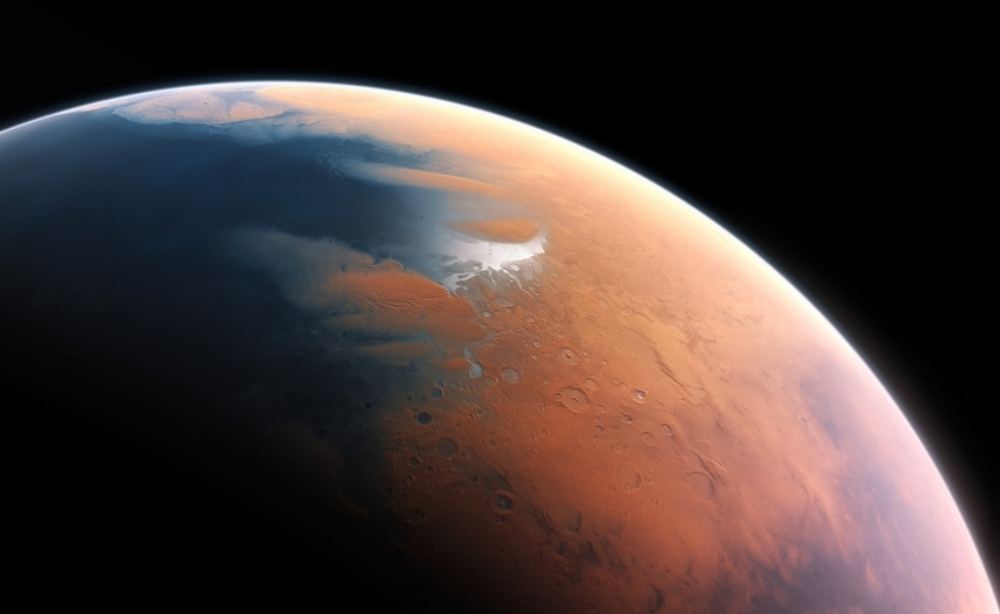
Life might have wiped itself out on early Mars. That’s not as absurd as it sounds; that’s sort of what happened on Earth.
But life on Earth evolved and persisted, while on Mars, it didn’t.
Continue reading “Early Life on Mars Might Have Wiped Out Life on Mars”Mars Rovers Will Need to Dig Deeper If They Want to Find Evidence of Life
The search for life—even ancient life—on Mars is trickier than we thought. In a recent study published in the journal Astrobiology, researchers have determined that NASA’s Mars Perseverance (Percy) Rover will have to dig two meters (6.6 feet) beneath the Martian surface in order to find traces of ancient life. This is because the surface of Mars is constantly bombarded with extreme levels of solar radiation that scientists hypothesize would quickly degrade small molecules such as amino acids. The reason for this extreme level of radiation is due to the absence of a magnetic field, which scientists believe was stripped away billions of years ago when the planet’s liquid outer core ceased to produce the dynamo that created the field.
Continue reading “Mars Rovers Will Need to Dig Deeper If They Want to Find Evidence of Life”Iceland is a Similar Environment to Ancient Mars
Mars is often referred to as “Earth’s Twin” because of the similarities the two planets have. In fact, Mars is ranked as the second most-habitable planet in the Solar System behind Earth. And yet, ongoing studies have revealed that at one time, our two planets had even more in common. In fact, a recent study showed that at one time, the Gale Crater experienced conditions similar to what Iceland experiences today.
Since 2012, the Curiosity rover has been exploring the Gale Crater in search of clues as to what conditions were like there roughly 3 billion years ago (when Mars was warmer and wetter). After comparing evidence gathered by Curiosity to locations on Earth, a team from Rice University concluded that Iceland’s basaltic terrain and cool temperatures are the closest analog terrain to ancient Mars there is.
Continue reading “Iceland is a Similar Environment to Ancient Mars”
